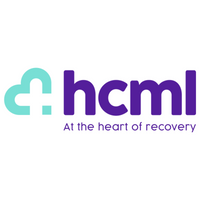5 ways to ensure employees get the best from your EAP
There has been a lot of discussion recently about the effectiveness of employee assistance programmes (EAPs), from concerns about vulnerable workers getting the right kind of support to the overall effectiveness of the service.
With instances of mental health conditions increasing and a reported rise in EAP use, employers must ensure an EAP solution is a good solution for the health and wellbeing of their workforce in the face of increasing use.
1. Manage expectations
Typically, EAPs come into use after the event in which the health condition is triggered has already happened and the impact already felt by the employee.
Traditionally the main focus of an EAP is mental health in the workplace. Employees will be advised on forms of emotional support with options of counselling, self-management guidance and signposting to other support services.
While offering vital help, an EAP cannot provide emergency support or be used as a standalone measure in supporting employee wellbeing.
Nor will the same interventions have the same outcomes for every employee. For example, the circumstances under which an individual contacts an EAP are varied, so while a set number of contact sessions may be appropriate for one person, in the long term, holistic or ongoing support may be required.
Employers must consider EAPs as part of a wider health and wellbeing strategy.
2. Understand underlying cause and risk factors
Employees will access an EAP service for a variety of reasons, both personal and professional.
They may feel stressed or anxious about a work situation, but in reality, an individual’s health and wellbeing is affected by a whole range of lifestyle factors.
EAP assessments consider all aspects of the individual’s lifestyle including clinical history, previous treatment, medication, genetics, the individual’s understanding of why they are experiencing these symptoms – the thoughts, beliefs, feelings and behaviours as a result of the condition – any physical symptoms, diet, alcohol intake, exercise and sleep.
Taking a biopsychosocial approach in the initial assessment will not only help identify and tackle root causes, but also strengthen good mental health long-term.
3. Change your EAP to provide extended support
In taking a biopsychosocial approach (whole body, mind, external influences) to assessment, an EAP service can be extended beyond traditional counselling provision, which means targeting specific factors that may be a cause or contributory factor in poor mental health.
For example, if an employee accesses the EAP because they are suffering depression, talking therapy might be recommended, and, in addition, they could be offered an exercise plan and nutrition advice to tackle help them maintain good mental health.
Enhanced access to different specialisms, such as nutrition, exercise, activity, musculoskeltal and sleep, enables individually tailored support. Employees get the right level of help at the right time, meaning better longer-term benefits and likely less reliance on EAP services.
4. Using a stepped/matched care model
In dealing with an increase of users, applying a stepped/matched care model is paramount. Many cases will benefit from non-clinical measures, for example, addressing diet or incorporating exercise or coaching sessions, so that employees can manage their mood and stress levels accordingly.
Working in line with NICE guidelines and the principle of matching the least intrusive intervention means reducing the risk of over-medicalising.
Of course, if an initial assessment flags a combination of key risks such as a history of mental ill health, lack of support network or trigger events, then specific clinical interventions may be recommended as the first step.
Offering a mix of clinical and non-clinical interventions helps to allocate the right support and better manage any increase in EAP use.
5. Prevention is primary
An influx of EAP users can be considered in two ways. Because mental health conditions are increasing, EAP use rates are correspondingly increasing.
But repeat users may not actually be a bad thing. It could be that employees are recognising when they are struggling and are accessing EAP services.
With the right mix of support, employees can manage their symptoms and are less likely to go sick, improving overall outcomes for the business.
Supporting good health and wellbeing may mean taking a more flexible approach to EAP provision, by scaling up resources to adequately deal with an increase.
But prevention is the primary intervention. A robust health and wellbeing strategy should aim to improve overall workforce health and wellbeing and prevent ill health in the first place.
This includes training for managers to spot the signs of burnout and stress and how to have open and honest conversations and manage emotional wellbeing in the workplace.
An EAP can provide anonymised data for organisations to start analysing patterns and trends in ill health, enabling employers to put in specific support to address these concerns and potentially reduce the need for employees to use an EAP.
An EAP that empowers employees to take control of their own health and wellbeing by providing a range of support enables organisations to move away from a one-dimensional support service to a multi-dimensional approach that targets the contributing factors that prompt employees to use it in the first place.
Supplied by REBA Associate Member, HCML
HCML is a health and wellbeing provider, offering integrated and personalised healthcare solutions.








